Winding through Japan’s central mountains, the 17th-century Nakasendo Trail leads travelers along ancient stone forest paths, through preserved Edo-era villages, and deep into the lost landscapes of feudal lords.
The beauty of this trail lies in its changeability, moving from town thoroughfares on mountain slopes to winding dirt tracks amid dense forests. Historically connecting Kyoto and Tokyo, the Nakasendo is now one of Japan’s most renowned hiking routes.
Instead of walking the full length of the original trail, many choose to complete smaller sections, particularly in the stunning Kiso Valley, with the beautifully preserved post towns of Magome and Tsumago among the highlights of a trek in this region.
While not impossible to squeeze in a half-day hike en route to or from Tokyo or Kyoto, we recommend spending at least one night at a post town on the trail as a fantastic way to experience rural Japan.
The walk from Magome to Tsumago can be accomplished in a single day, while hiking from Magome to Narai takes travelers on a three-day journey through the Kiso Valley on foot, which we’ve outlined in this guide.
History of the Nakasendo Trail
Over 330 miles (530 km) long, the Nakasendo Trail was first established in the 1600s as a trade route between Kyoto and Edo (modern-day Tokyo) that passed inland through Nagano’s mountains. Its travelers ranged from monks and merchants to samurai, high-class lords, and even royal princesses, all of whom refueled, rested, and slept at the 69 shukuba (post towns) dotted along the route.
While much of the original path has now been overlaid with modern roads, there are still remnants of Nakasendo’s first ishidatami (cobblestones) in the sloping woodlands between Magome and Tsumago. Both of these post towns still emulate their 17th-century appearance: low-roofed timber buildings, protruding balconies, and an absence of power lines all make you feel you’ve gone back in time.
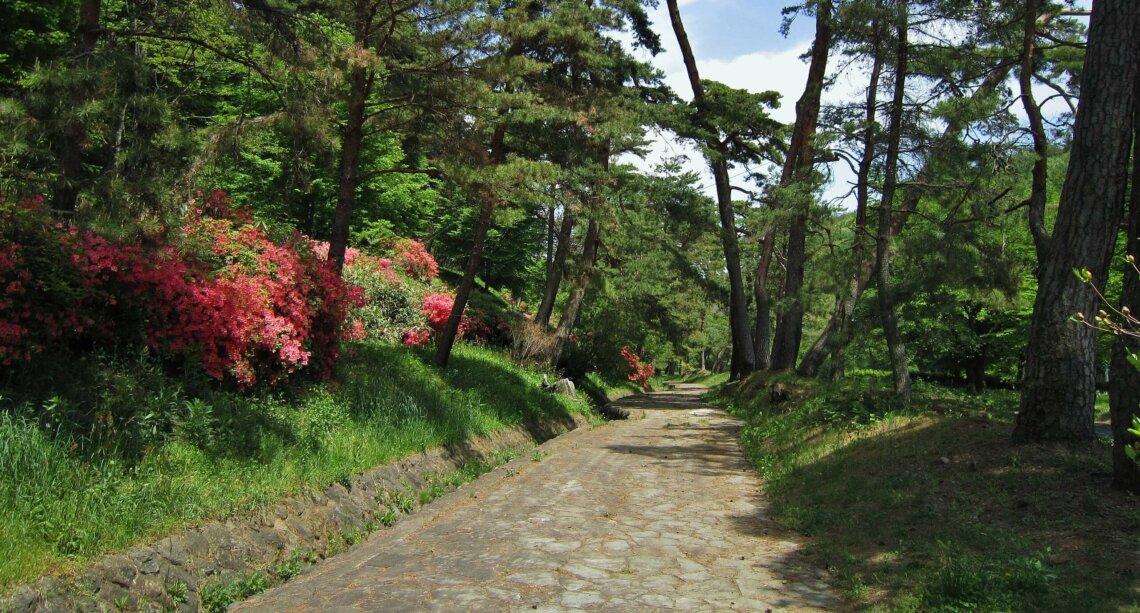
Best Time to Hike the Nakasendo Trail
While it’s possible to hike the Nakasendo Way throughout the year, the trail is popular enough to be especially busy during peak travel seasons. However, if you happen to be visiting Japan during a holiday weekend or peak season, the Kiso Valley can still offer an escape from more crowded urban destinations.
Since you’ll be out in the elements, the seasonal weather can dramatically affect your experience of the trail. Spring (April/May) and fall (October/November) tend to offer the most pleasant climates, with limited rain and comfortable temperatures; whereas the summer months are hotter and more humid with a higher chance of rain and typhoons.
Winter on the Nakasendo can also be beautifully picturesque, but you’ll need to take extra care when packing your gear to ensure you’ll be warm enough and prepared for snow and sometimes ice.
To get to grips with the Japanese seasons, see When Is the Best Time to Visit Japan.
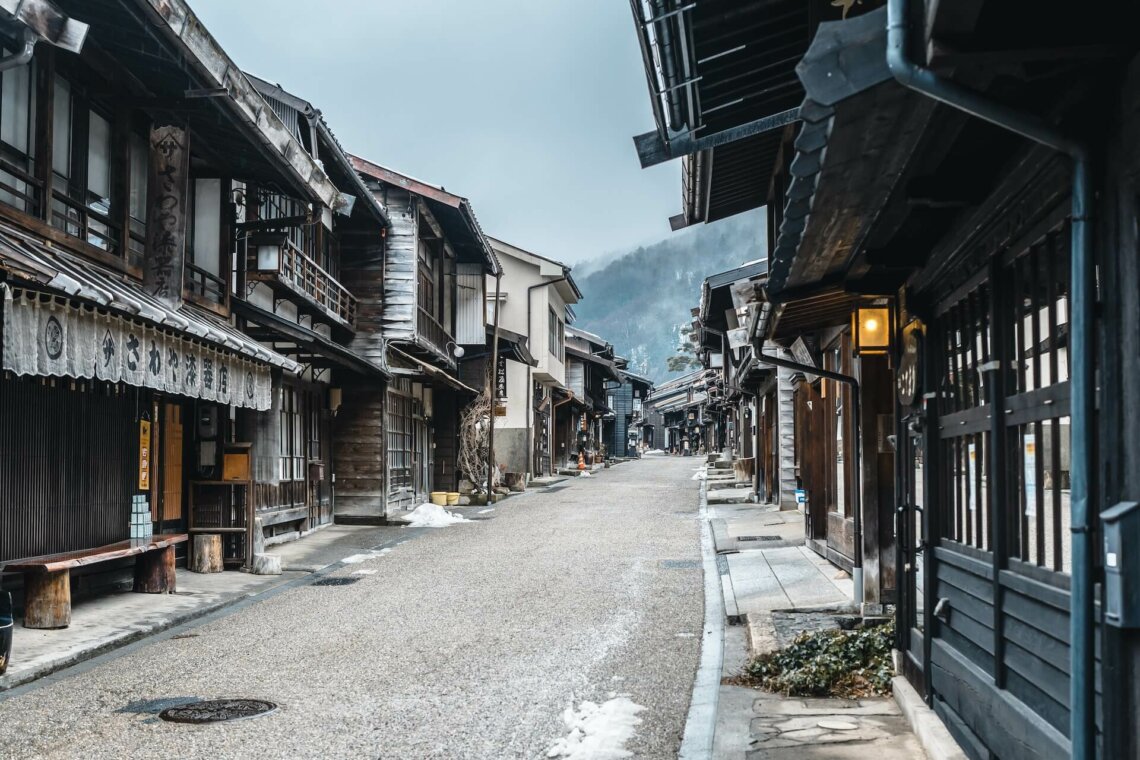
Getting to the Nakasendo Trail
There are multiple possible starting points for the trail, with the most popular being the post towns of Magome and Narai in Nagano Prefecture. Magome and Narai lie at opposite ends of the most commonly hiked stretch of the Nakasendo, which can be hiked in either direction, and is easily accessed by train from Tokyo and Kyoto.
Starting in Magome
Magome is a beautiful place to begin your exploration of the Nakasendo Trail. This small, peaceful post town is known for its preserved Edo-era buildings and scenic views of the Kiso Valley. At an altitude of 1985 feet (600 meters), Magome’s mountainside location means travelers can acclimate here before starting to hike.
Traveling to Magome from Tokyo
If you’re traveling from Tokyo, take the shinkansen (bullet train) west to Nagoya Station – this journey takes approx. 1 hour 45 minutes. At Nagoya, you’ll transfer to the Limited Express train headed north to Nakatsugawa Station in the Kiso Valley (approx. 1 hour).
If you’re traveling with a lot of luggage, we suggest using Japan’s wonderful luggage-forwarding service to make your travel that much easier.
Looking for a day hike closer to Tokyo? See our guide to the best hikes near Tokyo.
Traveling to Magome from Kyoto
From Kyoto, board the shinkansen to Nagoya Station, which takes about 35 minutes, then transfer to the Limited Express ‘Shinano’ train northwards to Nakatsugawa Station (approx 1 hour). On arrival, there are local buses that connect to Magome, around 25 minutes away.
Starting in Narai
Once the official midway point of the entire Nakasendo Way, the post town of Narai has a wealthy past, still evident in the historic buildings lining its main street. Starting your hike here is a great way to transport yourself back in time amidst restored wooden houses and traditional details.
Traveling to Narai from Tokyo
From Tokyo, take the shinkansen to Nagoya Station, where you can catch the JR Shinano Express train to Kiso-Fukushima Station which takes 2.5 hours. From there, change to the local JR Chuo line to Narai Station (approx 20 mins).
Traveling to Narai from Kyoto
If you’re coming from Kyoto, the above route is virtually the same. Take the shinkansen from Kyoto to Nagoya, then transfer to the Shinano Express train as far as Kiso-Fukushima Station. Transfer to the local train until you reach Narai Station. In total, the journey takes about three hours.
For more information, see our guide to getting around Japan by train.
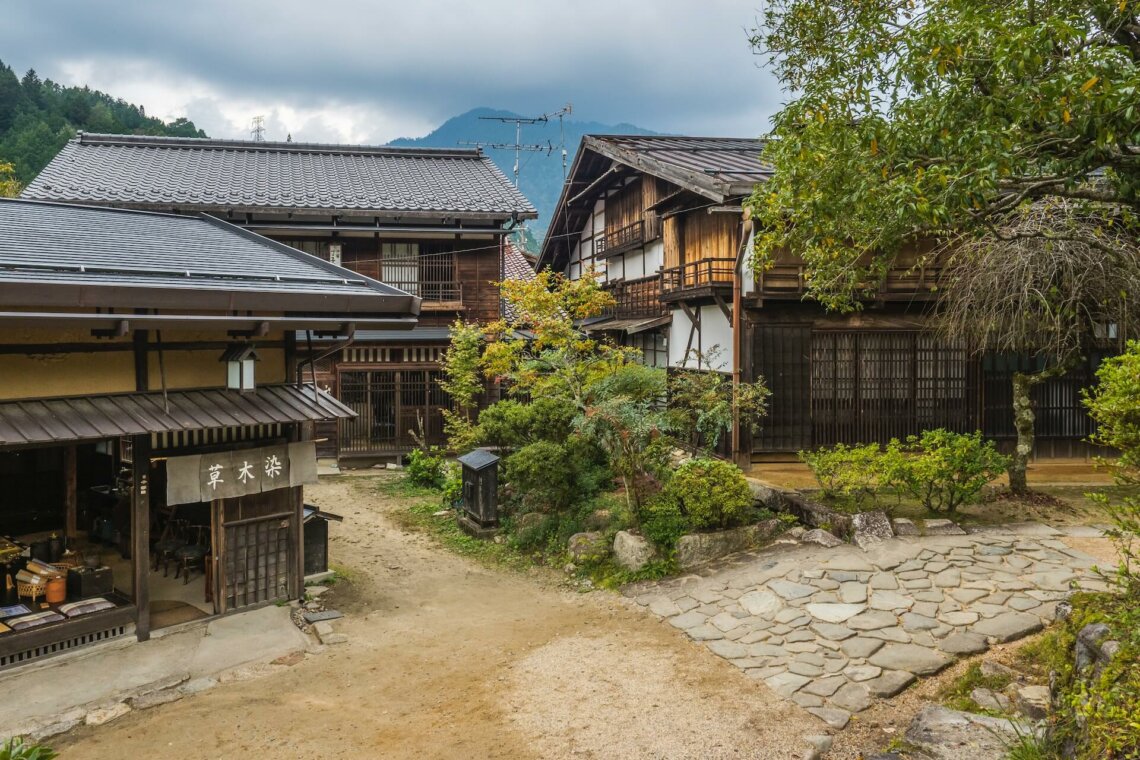
Nakasendo Trail Itinerary: 3 Days Exploring Japan’s Countryside
Hiking on the Nakasendo trail between Magome and Narai is a wonderful opportunity to swap urban exploration for serene and stunning countryside. Over just a few days you’ll discover rural mountain passes, peaceful forests, historic post towns, and the best of rural Japan on foot.
The itinerary below is one we recommend to travelers who want to add a mix of nature, tradition, and active exploration to a longer Japan itinerary. If you have less time to spare, the first segment can be planned as a day hike, ideally with a night in Tsumago.
Day 1: Walk from Magome to Tsumago
Start your day in the beautifully preserved post town of Magome, nestled on a steep slope of the Kiso Valley in Gifu Prefecture. Today’s 9 km hike is approximately 3-4 hours and takes you along some of the most well-preserved parts of the Nakasendo Trail before eventually reaching the next post town of Tsumago.
Heading uphill through Magome, you’ll pass old-fashioned wooden establishments serving soba noodles, oyaki dumplings, and gohei mochi – three local specialties – before joining the winding trail up through the rural countryside. Make sure to turn around for some spectacular mountain views, and keep an eye out for the historic Tateba tea house and its weeping cherry tree just outside.
Upon reaching the Magome-toge Pass at the top of the hill you can relax: the rest of your route today is steadily downhill. This section of the trail allows you to enjoy spots of forested shade, cross bridges over rocky creeks, and pause at the serene Odaki-Medaki waterfalls.
When you arrive in Tsumago, you’ll notice just how well-preserved the town is. Tsumago is one of Japan’s most picturesque historical villages. Since the 1960s, local residents have been successfully restoring the Edo-era buildings to their traditional lattice-wood appearance, and taking their visitors back in time as a result. Make sure to visit the twice right-angled masugata street, designed to protect against potential invaders, and perhaps pick up a walk certificate like Edo-era tourists once did.
Some visitors to Tsumago prefer to opt for an extra day to explore the town further, and there are many small inns in and around town.

Day 2: Hike From Tsumago to Nojiri & Train to Kiso-Fukushima
Enjoy a rural Japanese breakfast ahead of today’s 18 km hike which takes approximately 6 hours to reach Nojiri, much of which is uphill (on an incline). On the way, you’ll be a bit more off the beaten path and walking through scenery including tall bamboo groves and cedar forests connected by rural mountain paths and wooden foot bridges.
First up is the pleasant walk from Tsumago to the small town of Nagiso, home to the wooden Momosuke bridge built in the 1920s. This is a good place to pick up snacks and drinks for the day. Next, you’ll go uphill through forest and farmland, at times passing right through domestic back gardens while locals tend to their plants.
Upon reaching the Yogawa road, terraced rice fields begin to appear, and soon you’ll enter mossy forests with plenty of bear bells to ring in case of approaching wildlife. At the Nenoue Pass, it’s a downhill trail until you reach Nojiri, then catch an onward train to Kiso-Fukushima (30 minutes), which is home to many lovely ryokans. Perhaps you’ll find time for a steaming onsen to soothe any aching muscles after a long day too.
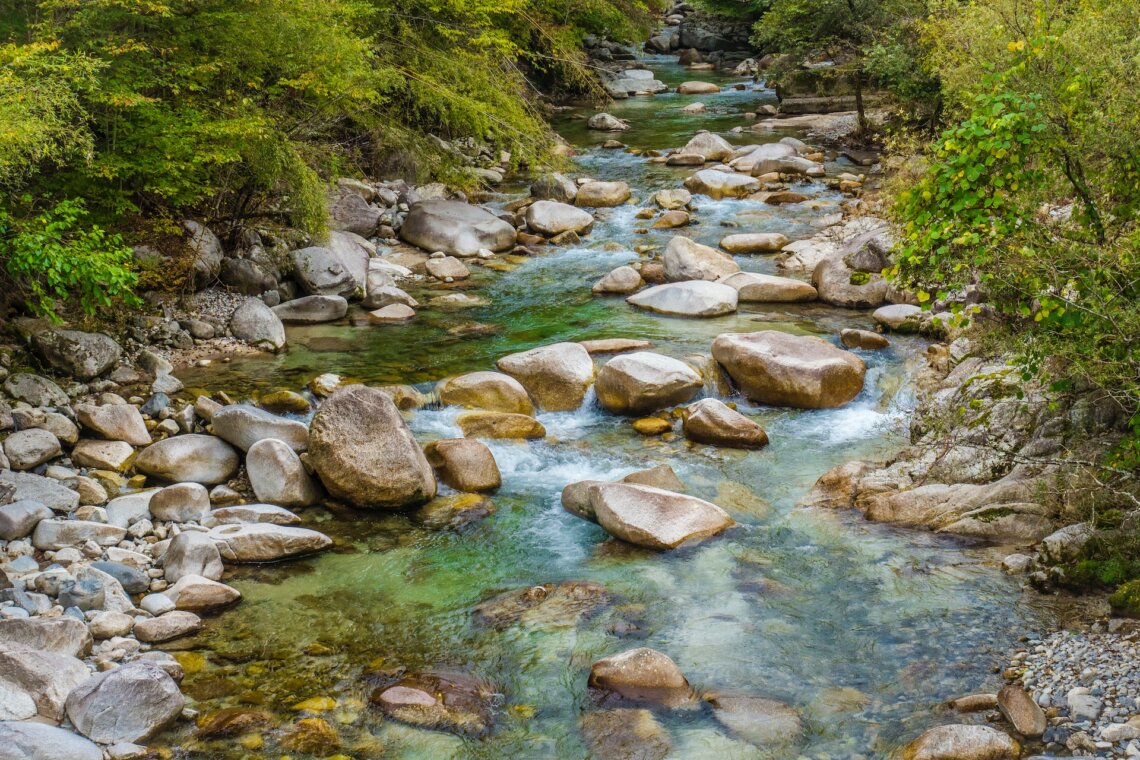
Day 3: Hike Over the Torii Pass to Narai-juku
From Kiso-Fukushima, catch a quick train to Yabuhara Station, hike about 3 hours going up and over the Torii Pass, then continue downhill to Narai-juku village. If you’re super active and keen to tackle another activity before leaving Kiso-Fukushima, there’s also a moderately intensive circular hike to a local waterfall (2-3 hours) with an ascent of 2075 feet (632 meters).
On arrival by local train in Yabahara, follow signs through the quiet town, heading up the mountain to the trailhead of the Torii Pass. This was considered the halfway point of the Nakasendo Road, and traveler documents were checked by feudal security, though nowadays it’s a beautifully ethereal spot. The Torii Gate is nestled among red cedar trees and ancient statues, and glimpses of the Kiso Valley can be viewed through the treetops.
A well-maintained trail zigzags its way down toward Narai, another beautifully preserved village and your final destination for the day. Historically, Narai was the post town exactly midway between Edo and Kyoto, and was the trail’s richest community as a result. Often called ‘the town of a thousand houses’, Narai is a lovely place to explore; there are museums of folklore and artifacts, handcrafted ornaments and local lacquerware to buy, and historical buildings-turned-cafes to visit.
Stop to marvel at the Kiso Bridge that crosses the Narai River: at 21 feet (6.5 meters), it’s one of Japan’s widest wooden bridges, built from ancient hinoki cypress trees.
Spend the evening at one of Narai’s many small inns, toasting to your successful exploration of the area on foot these past three days.
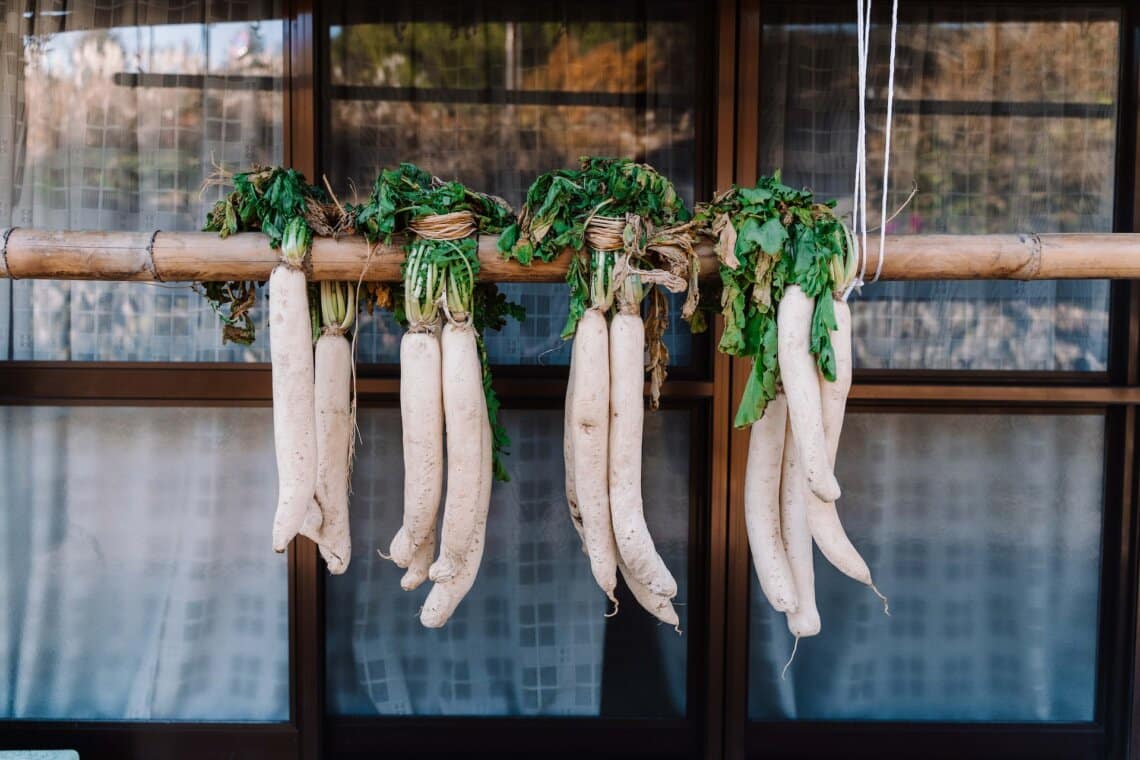
Nakasendo Trail Tips
Before setting off to hike Nakasendo, be sure to prepare to get the best out of your trip. Here are some tips to bear in mind:
Pack Light & Forward Your Luggage
Hilly trails and cobblestone pathways mean a good-fitting backpack rather than wheeled luggage is the best method for carrying your gear when hiking Nakasendo Trail. If you can live without your main suitcases during your time here, use Japan’s luggage forwarding services to skip your time on the Nakasendo altogether.
Alternatively, there are tourist centers in both Magome and Tsumago that will forward your luggage between the towns for a small fee
Make sure to carry essentials in a day pack. These should include:
- High energy snacks
- Waterproof bag with medications and identification
- Collapsible walking sticks
- Bag for carrying out trash
- Rain gear
Wearing hiking boots or good closed-toe shoes is essential to help protect your feet and ankles. The cobblestones get extremely slippery in rainy weather, so make sure your chosen footwear has a sturdy grip.
Don’t Count on Regular Wi-Fi
Due to the remoteness of parts of the trail, Wi-Fi may not be available at all post towns or accommodations, so it’s recommended to pre-download translation apps and any maps you might need.
For your best chances of accessing the web while hiking, you can also rent a pocket Wi-Fi device.
Book Ahead for Accommodations with Meals
Booking your accommodation ahead of time is wise, particularly as towns in the Kiso Valley have limited accommodation options, which often book up well in advance. Make sure to include dinner and breakfast with your reservations, as other dining options may be limited.
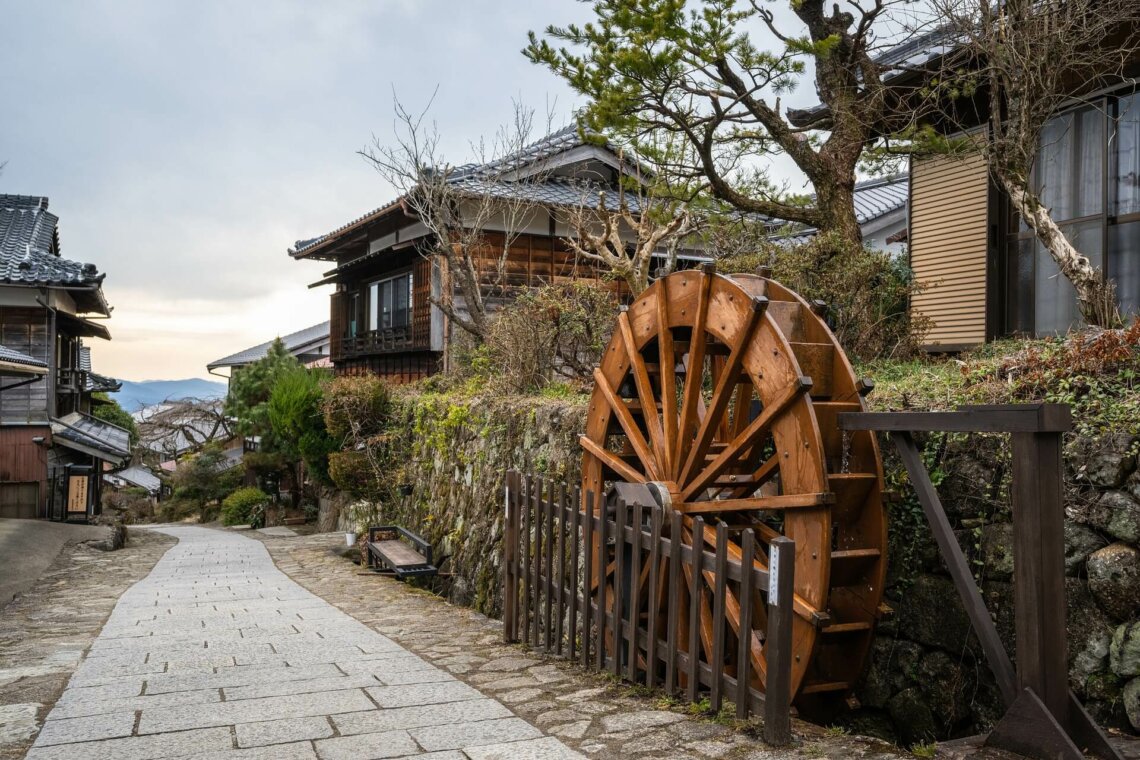
Where to Stay on the Nakasendo Road
There are beautiful places to stay along the Nakasendo Trail, with traditional ryokan inns and locally-run minshuku (guesthouses) in each post town. For the most part, your bedding and meals will be traditionally Japanese, perhaps with shared bathroom facilities too.
As the Kiso Valley is renowned for its thermal hot springs, accommodations with private onsen are likely here. In your most likely destinations along the trail, consider these options for where to stay:
Accommodations in Magome
Many travelers begin in Magome and thus do not need a place to spend the night here. But if you’re ending your Nakasendo hike here, and don’t have time to continue onward to your next destination in Japan, consider one of Magome’s simple minshuku (guesthouses), such as the historic Tajimaya.
Accommodations in Tsumago
Most travelers spending one or more nights on the Nakasendo Road will spend a night in or near Tsumago, and it’s definitely worthwhile!
The town is full of small, rustic but charming minshuku and simple ryokans. One popular inn for travelers is Fujioto, which is both traditional and tourist-friendly.
Accommodations in Kiso-Fukushima
Not all travelers will spend a night in this region, but if you’re hiking between Tsumago and Narai, this is a great area in which to rest your legs and soak in an onsen. There are a handful of very nice ryokans around here, including the simple but lovely Komanoyu among others.
Accommodations in Narai-juku
Narai is home to many cute and rustic minshuku, and also happens to boast one of the most luxurious properties to be found along the Nakasendo, Byaku Narai, a modern inn with traditional aesthetics that aims to preserve local architecture with a tasteful contemporary flair.
Looking for More Japanese Hiking Experiences?
We hope we’ve inspired you to explore the Nakasendo Trail on foot, and that you’ll consider including some hiking in your custom itinerary!


